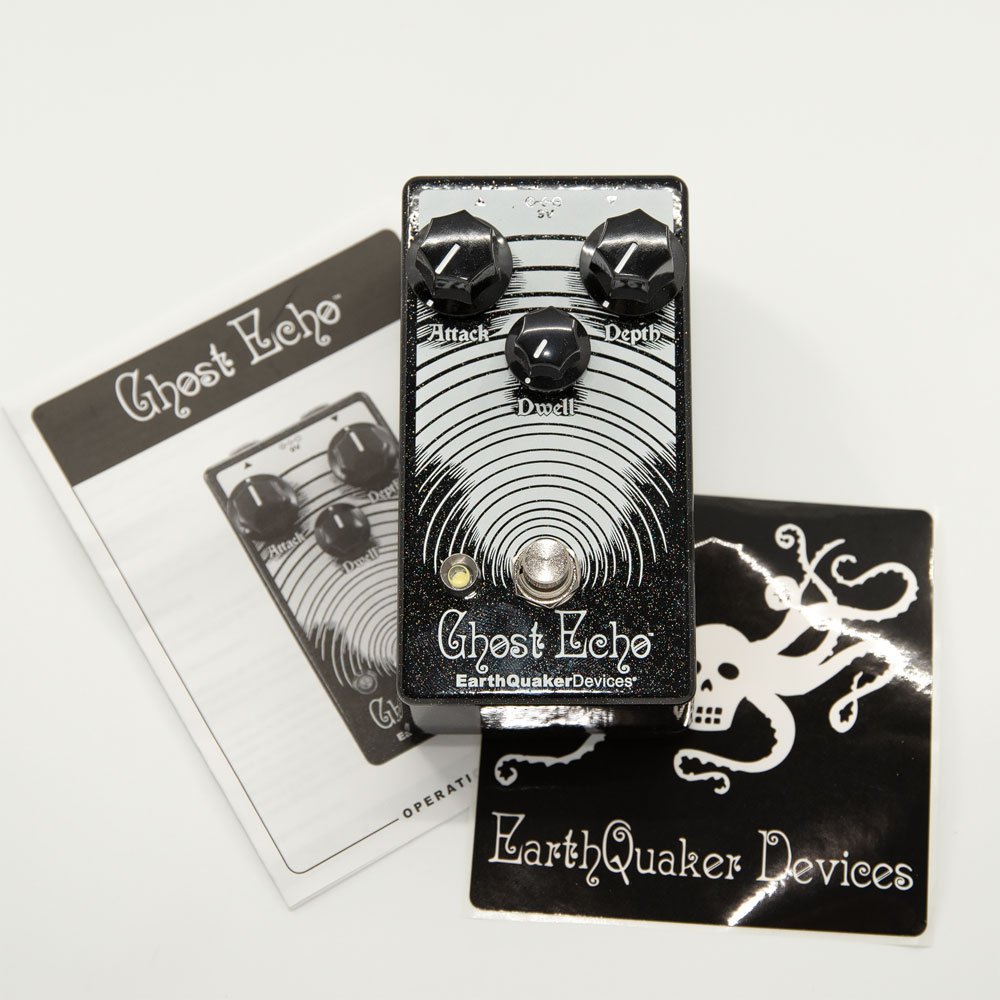
EarthQuaker Devices Ghost Echo Vintage Voiced Reverb Pedal
There's nothing quite like a real spring reverb. Believe it or not, it all started with Hammond Organs in the 1940's and the effect was so popular that Leo Fender purchased a license to put them in his amplifiers. The sound of spring reverb and guitar was a match made in heaven, and in 1961 Fender started selling separate reverb units that you could set atop any amp to reap the benefits of the ethereal goodness. Today you can find just about any style of reverb in a stomp box but folks will still spend thousands of dollars on analog reverb units, especially if it's tube-driven like the originals. Lucky for us, EarthQuaker Devices set out give everybody a taste of the good old days with the Ghost Echo.
We've seen lots of reverb pedals in our day and while many did "the job" there is a constant issue of tone coloration. Reverb pedals typically go at the end of your signal chain and there's nothing worse than spending hours (days? months? years?) building your perfect pedal board only to have the tone altered by a pedal meant to simply enhance it. The Ghost Echo is without a doubt the most transparent spring reverb we've encountered. There's virtually no response alteration or annoying metallic shimmer that can often plague digital spring emulations. The controls are just like a real tank unit, with a modern twist that gives you more flexibility for the stage or the studio. On an original Fender unit for example you'd have Dwell, Mix and Tone. On the Ghost Echo, Depth is your wet/dry mix, Dwell is the decay length and Attack is a unique pre-delay control. We love the fact that there is no tone control and the Attack knob gives you 30-150ms of delay between the note you play and the first reflection, effectively letting you simulate different size rooms. The Dwell knob is also designed to self oscillate after about 3 o'clock on the dial so when you combine that with different pre-delays you can go from old school reverb tank to ethereal soundscape with a few simple tweaks.
The Ghost Echo is a big win in our book. It's simple yet stunningly effective and can appeal to both the traditionalist and the experimenter. If you want a reverb that works for you and not the other way around, don't pass this up.
In Earthquaker Devices own words....
It’s the all new, extra spook-tacular, Ghost Echo calling out from beyond the void! The Ghost Echo is our spooky take on the haunted* amp-top spring reverberation units of yesteryear. This creepy analog/digital spring reverb emulation machine boasts a terrifying 30ms – 150ms of pre-delay, controllable via the Attack knob, for everything from a quick rockabilly slapback to viscous pools of ectoplasmic reverberations. When playing staccato, you’ll hear the tortured trails of the reverb, resulting in more of a slapback or echo sound. Legato playing will reveal a massive ambient “depth” that fattens up the sound – and look out, it’s right behind you!
The Dwell control sets the length and thickness of the decay, which is to say that it controls how long the disembodied spirits of notes no longer with us float through the ether. At the maximum setting it will descend into an infinite loop of self-oscillation. The Depth sets the intensity of the reverb, which you probably know as the wet/dry mix, but we like to think of it more as how scary the overall effect is.
1. Attack: Adjusts the length of the pre-delay, from 30ms at minimum to about 150ms at maximum. When the Dwell is set to self-oscillate, this will change the pitch of the oscillations.
2. Dwell: Adjusts the length of the decay. This will start to self oscillate around 3 O’clock, the pitch of the oscillations can be changed by turning the Attack control.
3. Depth: Mixes in the wet signal with the dry, unity is around noon and everything after is boosted.
This device takes a standard 9 volt DC power supply with a 2.1mm negative center barrel. We always recommend pedal-specific, transformer-isolated wall-wart power supplies or multiple isolated-output supplies. Pedals will make extra noise if there is ripple or unclean power. Switching-type power supplies, daisy chains and non-pedal specific power supplies do not filter dirty power as well and let through unwanted noise. DO NOT RUN AT HIGHER VOLTAGES!

 Voted Best in Music 2023!! Thank you!
Voted Best in Music 2023!! Thank you!


